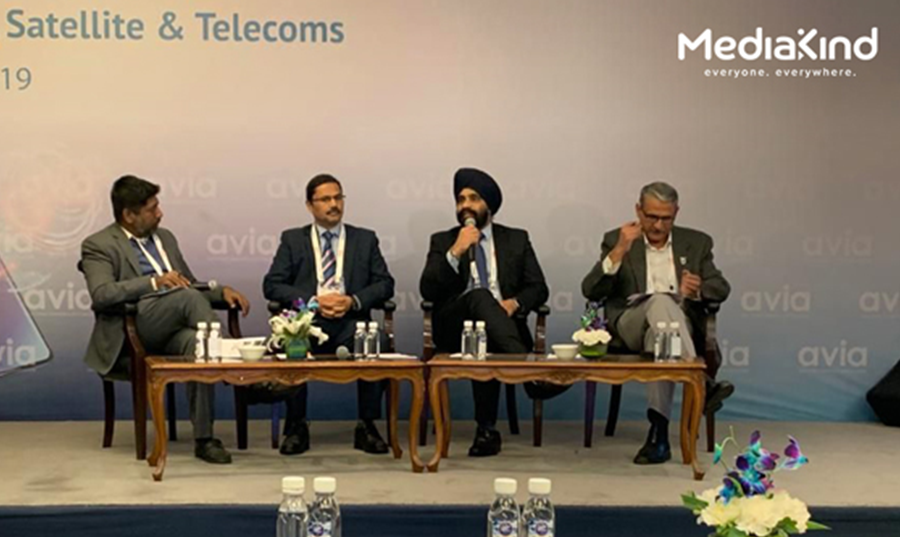In the global shift towards digital video consumption, India is helping to lead the way. However, with the amount of online video content being consumed quickly rising, the Indian video market has become increasingly competitive as broadcasters, operators, and service providers look to monetize the time audiences spend on digital platforms.
What’s more, the burgeoning media landscape is affecting business practices across the entire video delivery pipeline; from maximizing advertising revenues to ensuring broadcast-quality streaming. The pandemic has only furthered these trends, encouraging a significant uptake across the region, with new opportunities diversifying the future of video streaming.
India leads the global growth in video streaming
In 2019, India’s television industry was worth approximately 787 billion Indian rupees (INR), according to Statista. It is estimated to reach INR 882 billion by 2022, indicating a compound annual growth rate of around four percent. Looking at the video consumption trends in the region, mobile web users consumed on average 6.2 hours of media daily, including 102 minutes of mobile media and 79 minutes of online desktop media, according to figures from Deloitte.
India’s online video streaming market is currently dominated by Google’s YouTube, Amazon Prime, Disney’s Hotstar and Netflix. The region alone has 36 over-the-top (OTT) services that showcase local content and talent. However, as a region, India is faced with major subscription challenges; despite the demand for content, consumers are not always as willing to pay.
India is the fastest growing media and entertainment market globally, and its momentum is only expected to continue. According to PwC’s Global Entertainment & Media Outlook 2019–2023, the Indian entertainment and media industry is expected to reach INR 451,373 Cr by 2023, growing at a compound annual growth rate (CAGR) of 11.28% between 2018 and 2023. The study also found that India will see significant growth in OTT, online gaming and internet advertising in the next five years.
Heightening barriers of consumption
The majority of streamed content in India is consumed on mobile devices, yet there is still some penetration of users opting for smart TVs, with targeted advertising and personalization technologies being harnessed to bring exciting content experiences to audiences. Operators need to establish how they can deliver content to mobile devices in the most efficient and effective ways, particularly where broadband bandwidth isn’t as prevalent and mobile becomes the device of choice for content consumption.
The upcoming Indian Premier League (IPL) is a ripe example. Scheduled from September 19 to November 8, the league will no longer be streamed for free on Disney+ Hotstar, as originally planned. Fans will instead have to pay to watch the upcoming season after media conglomerate Star India strategically opted to move the live stream to Disney+ Hotstar Premium. Last year alone, the IPL registered an accumulative 300 million viewers on Hotstar. However, according to a report quoting an inside source, the conglomerate is confident it will boost its subscription base regardless of the fee.
Despite the impressive audience figures of the IPL last year, the OTT sector is not without its technical challenges, and we are still seeing latency for broadcasting and streaming impacting viewing experiences. There have been significant improvements in the last 12 months as technology has evolved and standards have matured, however, the content lag remains. I expect over the next six to 12 months we will see latency drop down to a single digit, with a manageable three to four second delay.
Is aggregation the key to success?
The tantalizing number of OTT services is beginning to affect business practices, particularly as advertising revenues are stretched. Most of the OTT platforms in India also host live content such as news and sports, causing some contest with linear platforms which are also vying for broadcasting rights. In the midst of the pandemic, new release movies from Bollywood and original series have been released direct-to-consumers on streaming platforms with the closure of movie theaters and cinemas, creating a further need for streaming platforms to evolve and innovate with changing market conditions.
The ability to aggregate — something audiences around the world are increasingly hoping for — could see an uptake of subscribers. I expect aggregation will become a top priority throughout 2021 and open significant new opportunities for smaller OTT players.
This year alone, we have seen new OTT players enter the market with new content offerings at no premium cost. This is a strategic move to gain viewership and, if deployed correctly, will help drive revenues, particularly if aggregated and consolidated content is a feature.
Content evolution with personalization
With so much content available to stream, the discovery process has become dense, meaning consumers are struggling to find content they’re interested in watching. Employing actionable insights and leveraging the power of media platform analytics to improve content recommendations offers significant benefits – not least by enabling smarter, data-driven decisions into future services. By offering a more compelling user experience, service providers can better position themselves to gain new subscribers.
Despite ad-revenue coming in short, when we look at the demographics of the region, there is an emerging younger population who are more selective about their streaming experiences. These audiences value personalization and have a willingness to pay for curated services. Content providers will need to harness this opportunity to link personalized feeds with advertising revenues with the support from backend solution providers.
India is a thriving hub of original content creators and OTT services. The complex landscape will continue to bloom with innovative technology solutions to overcome the hurdles. The possibilities of aggregation and consolidation for the future of video streaming are critical to the region’s ongoing success.
To learn more, join me for the AVIA India: The Future of Video Streaming – How technology is affecting business practices webinar on Thursday 10 September. Click here to register to watch the webinar and for more information on other sessions.



